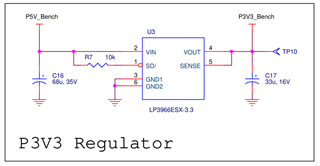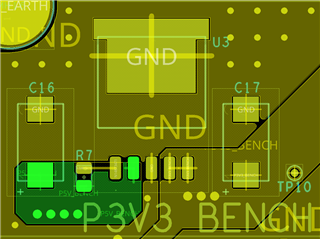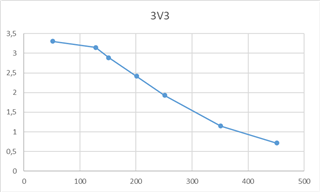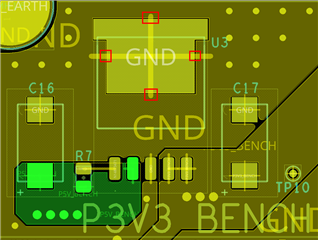Tool/software:
Hello,
Based on a design produced some time ago, our customer is currently reporting problems with the 3.3V LP3966 regulator's load handling. Voltage only drops when microcontrollers start up, so they are constantly rebooting. The output current required by this regulator is around one hundred mA, well below the LP3966's maximum capacity of 3A.
We have very recently repaired a board by changing the regulator and the output decoupling capacitor.
I was able to make the following measurements after changing the components :
|
3V3_BENCH Load |
3V3_BENCH |
Consumption on primary 12V |
|
Unloaded |
3.306 V |
44 mA |
|
93 mA |
3.304 V |
90 mA |
|
305 mA |
3.303 V |
183 mA |
|
500 mA |
3.303 V |
272 mA |
|
1 A |
3.303 V |
502 mA |
|
2 A |
3.000 V |
566 mA |
These measurements seem to be good, and the oscilloscope measurements didn't show any faults either.
Here's the schematic implementation and routing of this regulator on the :


The implementation seems to be correct with regard to the datasheet recommendations.
-> So what could make the regulator malfunction on the power supply? And why are there now regulators that no longer hold the load?
Design problem (thermal brake too weak?)
Output overload/short-circuit (yet internal protection in the controller?)
Thanks a lot for your help,
Best Regards,
Louis



